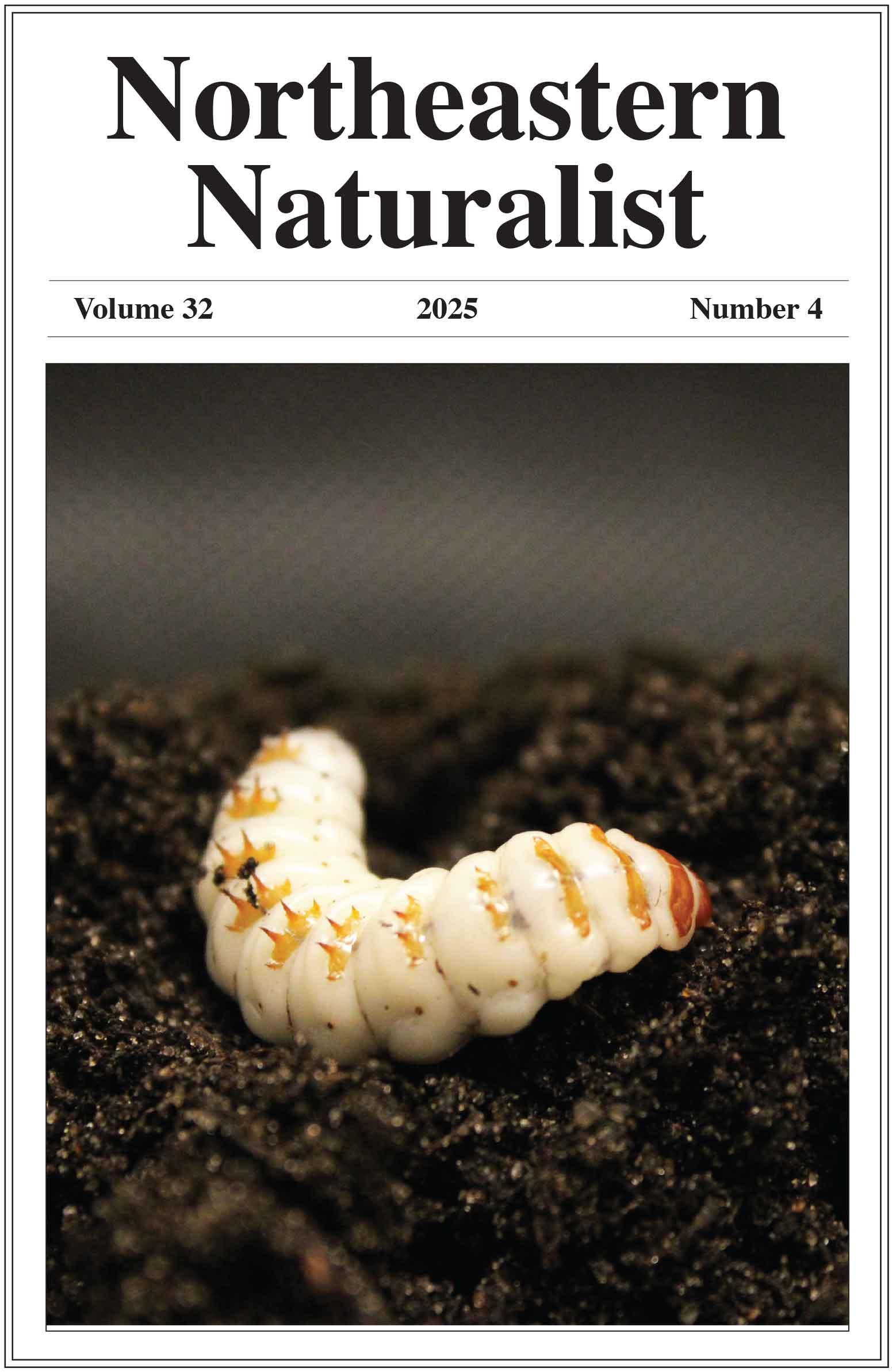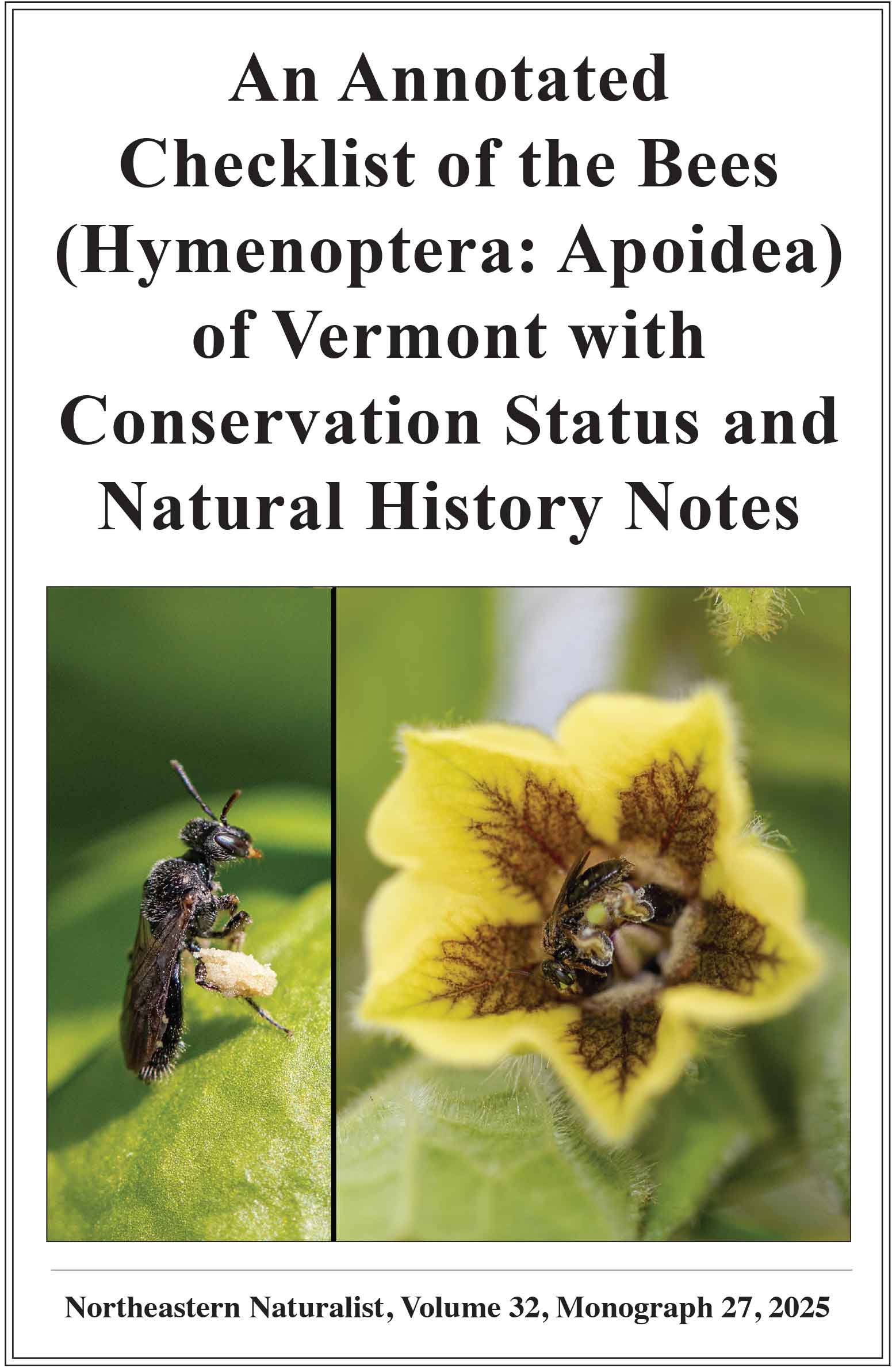Effects of Capture and Handling on Wood Turtle (Glyptemys insculpta) Movement
Anna C. Varty1, Damien I. Mullin1,*, Graham J. Forbes1, and Christopher B. Edge2
1Department of Biology, University of New Brunswick, Fredericton, NB E3B 5A3, Canada. 2Canadian Forest Service, Natural Resources Canada, Fredericton, NB E3C 2G6, Canada. *Corresponding author.
Northeastern Naturalist, Volume 31, Special Issue 12: G97–G109
First published early online: 3 August 2024
Abstract
Radio-telemetry has provided valuable information about habitat use, movement, and ecology of reptiles. However, capture and repeated observations can be stressful for animals and may affect behavior, which could influence conclusions drawn from observations. Previous work on handling-induced stress of Glyptemys insculpta (Wood Turtle) showed a physiological response to handling, though there is currently no data on how handling may impact the spatial behavior and movement of this species. We examined the spatial effects of handling 21 adult female Wood Turtles in New Brunswick, Canada, using GPS loggers. We found that turtles moved significantly more after handling events than before, suggesting that turtles may exhibit a flight response to handling. We suggest future studies on turtles limit unnecessary interaction with study individuals and avoid using relocations in habitat-use studies for up to 50 hr after capture when studying fine-scale animal movement and habitat use.
![]() Download Full-text pdf (Accessible only to subscribers. To subscribe click here.)
Download Full-text pdf (Accessible only to subscribers. To subscribe click here.)
Access Journal Content
Open access browsing of table of contents and abstract pages. Full text pdfs available for download for subscribers.
Issue-in-Progress: Vol. 33(1) ... early view
Check out NENA's latest monograph and Special Issue:













 The Northeastern Naturalist is a peer-reviewed journal that covers all aspects of natural history within northeastern North America. We welcome research articles, summary review papers, and observational notes.
The Northeastern Naturalist is a peer-reviewed journal that covers all aspects of natural history within northeastern North America. We welcome research articles, summary review papers, and observational notes.